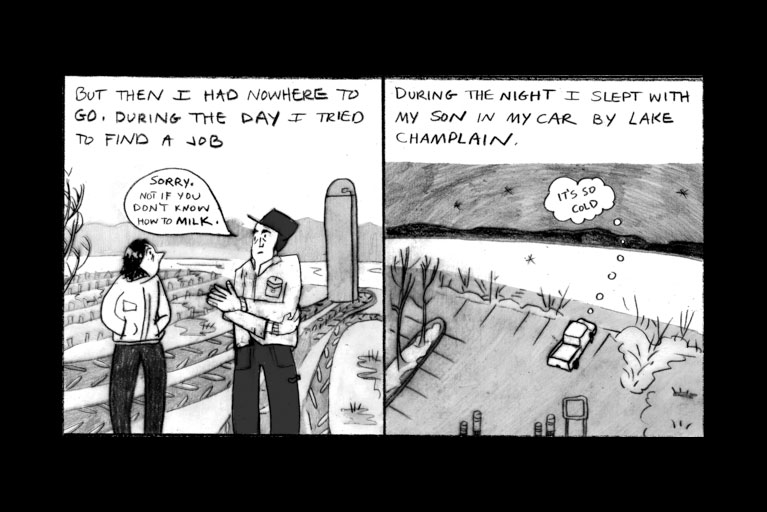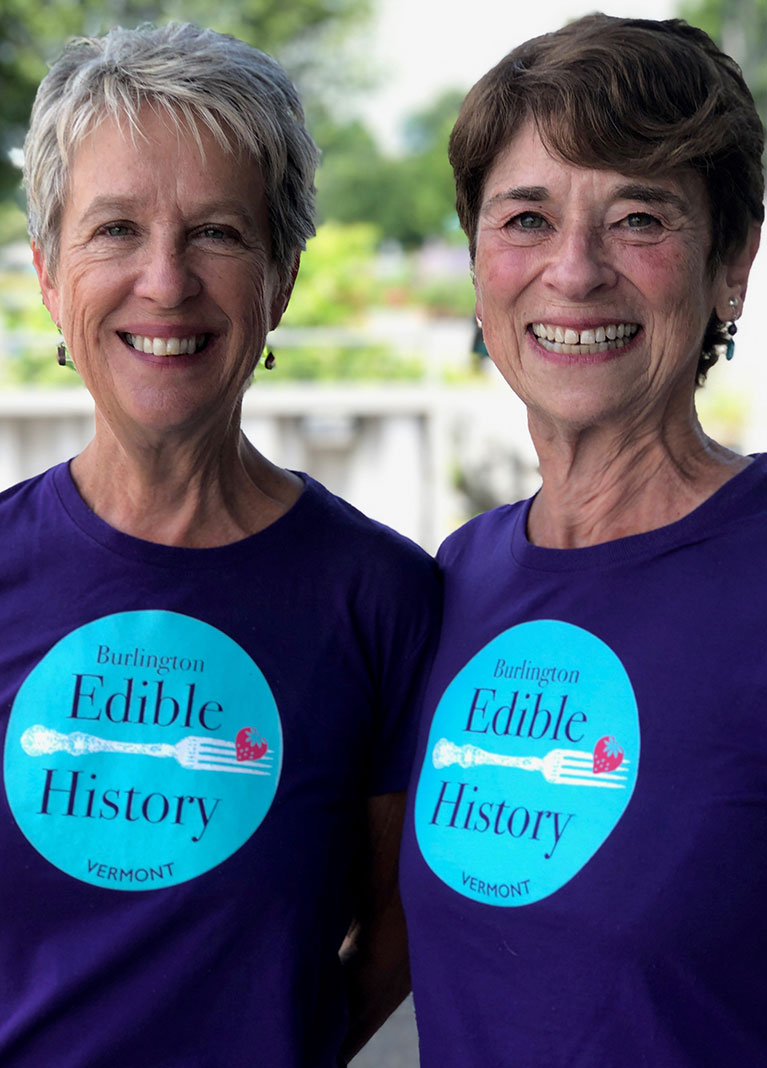After the Crossing
Many different groups of people, from many different continents, have helped build our state. But from the 19th century through 2019, the stories of immigrants have largely been excluded from the popular image of Vermont.
Color illustration of “Jose” by Marek Bennet at marekbennett.com.
This Episode’s Featured Object:
Steamer Trunk from M. Fukuda
Amanda Gustin: We have a lot of objects in the Vermont Historical Society that represent the experiences of immigrants and of people of different cultures who lived here in Vermont, who built their lives here in Vermont.
But often when we talk about immigrant experiences, we think about the choice to make the journey in the first place. So, I kind of love that we have this trunk to represent that moment. There’s a before and after, but there’s always that decision to move.
Images: A panel from “Guadalupe’s” comic book, illustrated by Iona Fox, shows her sleeping with her toddler in a truck beside a wintry Lake Champlain.
Julia Doucet is an outreach nurse at the Open Door Clinic in Middlebury. The problems she saw in the lives of migrant farm workers led her to imagine a series of stories about their experiences.
Marek Bennett is a cartoonist from New Hampshire. He helped create several of the “El Viaje” comic books, including one about a mechanic who asked to be called, “El Migrante,” the migrant.
Elise Guyette (left) and Gail Rosenberg from Burlington Edible History Tours.
Episode Transcript
Elise Guyette (during walking tour): So, the first really large group of migrants who came after the Yankees were the Irish. And of course they came because they were trying to survive by leaving the famine.
Elise Guyette and Gail Rosenberg lead “Edible History Tours” in Burlington. People sign up to walk a mile and a half around the city, sample food at five restaurants, and learn a little bit about local history. The group has gathered around Elise behind Union Station, where train travelers once arrived.
Elise (during tour): And to Vermont for some reason, there were more women who came. And when these women got here, a lot of them went up and they became servants for people up on the hill. “Up on the hill” means you had made it, you had a lot of money and you moved up to the hill.
Gail Rosenberg: We think that stories are remembered more, one, when they’re stories and not just a listing of dates and what were considered the traditional heroes. And the other is the food.
Episode Credits
Before Your Time is presented by Vermont Humanities and the Vermont Historical Society. This episode was produced by Ryan Newswanger and Amanda Gustin.
Thanks to our guests: Elise Guyette, Gail Rosenberg, Steve Perkins, “Guadalupe,” Julia Doucet, Marek Bennett, Paul Searls and Jeff Potash. Gina Robinson translated Guadalupe’s statements. And thanks to the Open Door Clinic and the Vermont Folklife Center for sharing with us the stories from the Most Costly Journey comic book series.
Music is by Michael Chapman and the Woodpiles, Blue Dot Sessions, the Augustine, Joy Drops, Christian Larssen, and Lobo Loco.





